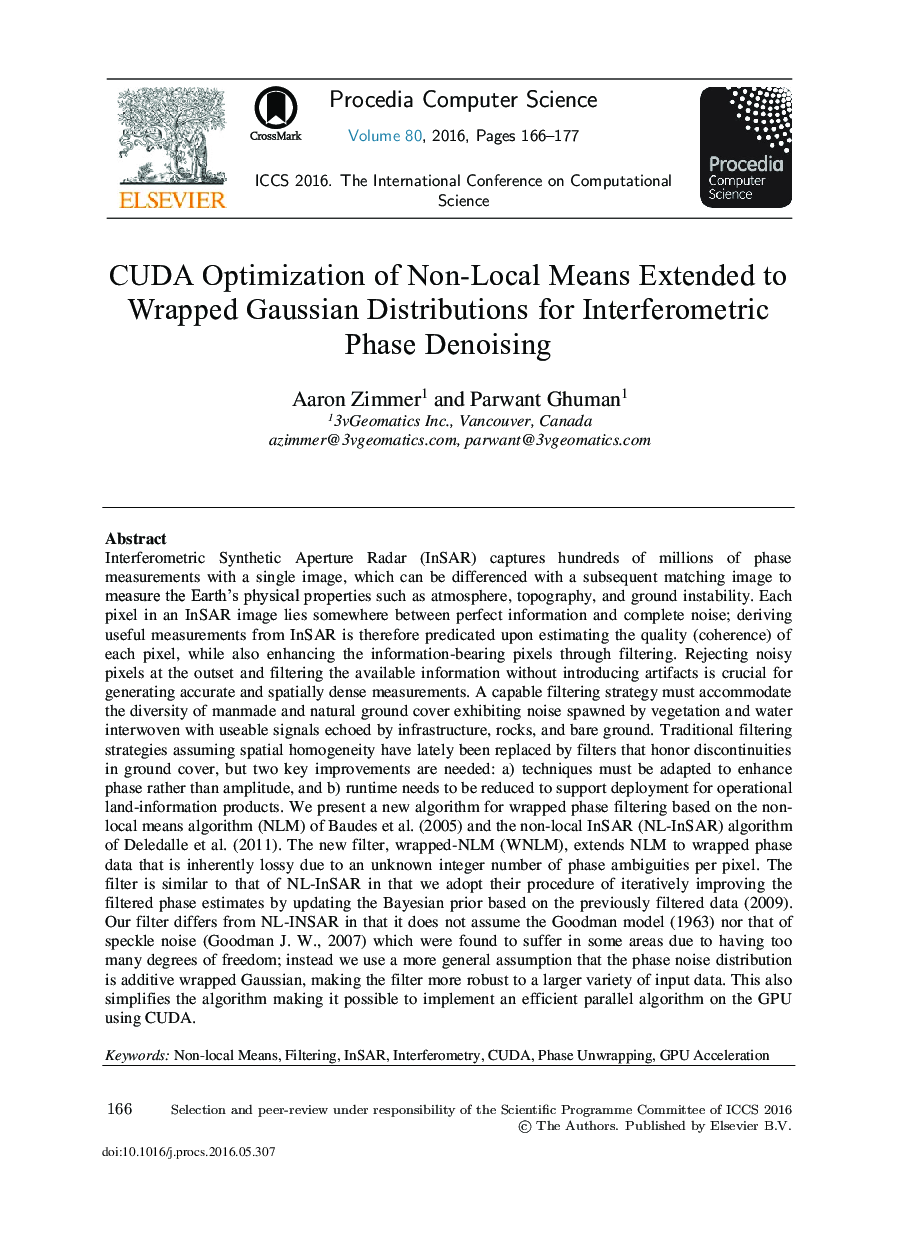| Article ID | Journal | Published Year | Pages | File Type |
|---|---|---|---|---|
| 484082 | Procedia Computer Science | 2016 | 12 Pages |
Interferometric Synthetic Aperture Radar (InSAR) captures hundreds of millions of phase measurements with a single image, which can be differenced with a subsequent matching image to measure the Earth's physical properties such as atmosphere, topography, and ground instability. Each pixel in an InSAR image lies somewhere between perfect information and complete noise; deriving useful measurements from InSAR is therefore predicated upon estimating the quality (coherence) of each pixel, while also enhancing the information-bearing pixels through filtering. Rejecting noisy pixels at the outset and filtering the available information without introducing artifacts is crucial for generating accurate and spatially dense measurements. A capable filtering strategy must accommodate the diversity of manmade and natural ground cover exhibiting noise spawned by vegetation and water interwoven with useable signals echoed by infrastructure, rocks, and bare ground. Traditional filtering strategies assuming spatial homogeneity have lately been replaced by filters that honor discontinuities in ground cover, but two key improvements are needed: a) techniques must be adapted to enhance phase rather than amplitude, and b) runtime needs to be reduced to support deployment for operational land-information products. We present a new algorithm for wrapped phase filtering based on the non-local means algorithm (NLM) of Baudes et al. (2005) and the non-local InSAR (NL-InSAR) algorithm of Deledalle et al. (2011). The new filter, wrapped-NLM (WNLM), extends NLM to wrapped phase data that is inherently lossy due to an unknown integer number of phase ambiguities per pixel. The filter is similar to that of NL-InSAR in that we adopt their procedure of iteratively improving the filtered phase estimates by updating the Bayesian prior based on the previously filtered data (2009). Our filter differs from NL-INSAR in that it does not assume the Goodman model (1963) nor that of speckle noise (Goodman J. W., 2007) which were found to suffer in some areas due to having too many degrees of freedom; instead we use a more general assumption that the phase noise distribution is additive wrapped Gaussian, making the filter more robust to a larger variety of input data. This also simplifies the algorithm making it possible to implement an efficient parallel algorithm on the GPU using CUDA.
